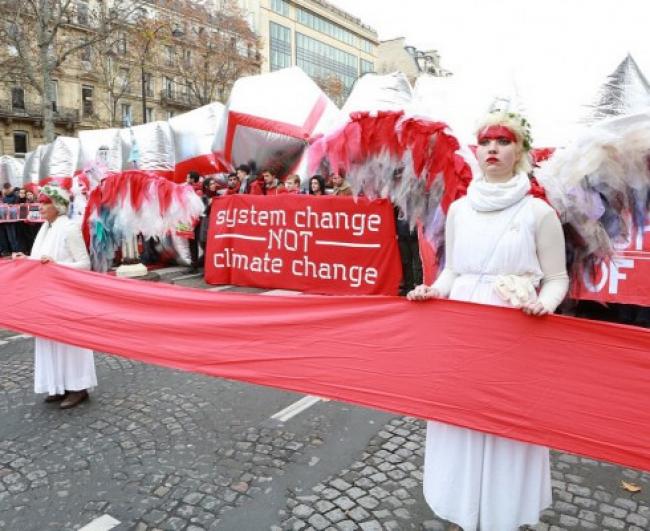Articles Menu

On the final day of the UN summit (COP21) held in Paris in December 2015, thousands of people defied a ban on public gatherings by converging at a boulevard leading to the business district in La Défense to denounce the new climate agreement that government negotiators were about to sign and celebrate at the conference venue in Le Bourget, 20 kilometres away. Hoping to counter governments’ attempts to control the narrative regarding the summit, they gathered behind giant inflatable ‘cobblestones’ and a red banner proclaiming “System change not climate change!”
[System Change Not Climate Change.]
Departing from some other environmentalist groups, they held placards criticizing the undemocratic ways in which decisions regarding our relationship to nature are ultimately made only by capitalists and other powerful groups in the current global capitalist system.
In different ways, they put forward a more democratic alternative: a system in which ‘the people’ decide on important questions such as what sources of energy to use and what activities to power and for whose benefit, how many trees to fell and to produce what goods for whom or, more generally, how to organize our relationship to nature and in pursuit of what ends.
Broad and as defiant as the action turned out to be, however, it was still not as large or as confrontational as some of the organizers had hoped. Unable to rally more people behind them, the radical anti-capitalists had little choice but to abandon their original plan to barricade Le Bourget and also ruled out marching on La Défense. In the end, the protesters could only gather, lobbing their ‘cobblestones’ in the air, aimed at no targets. Meanwhile, the popping of champagne corks in Le Bourget or La Défense went undisturbed.